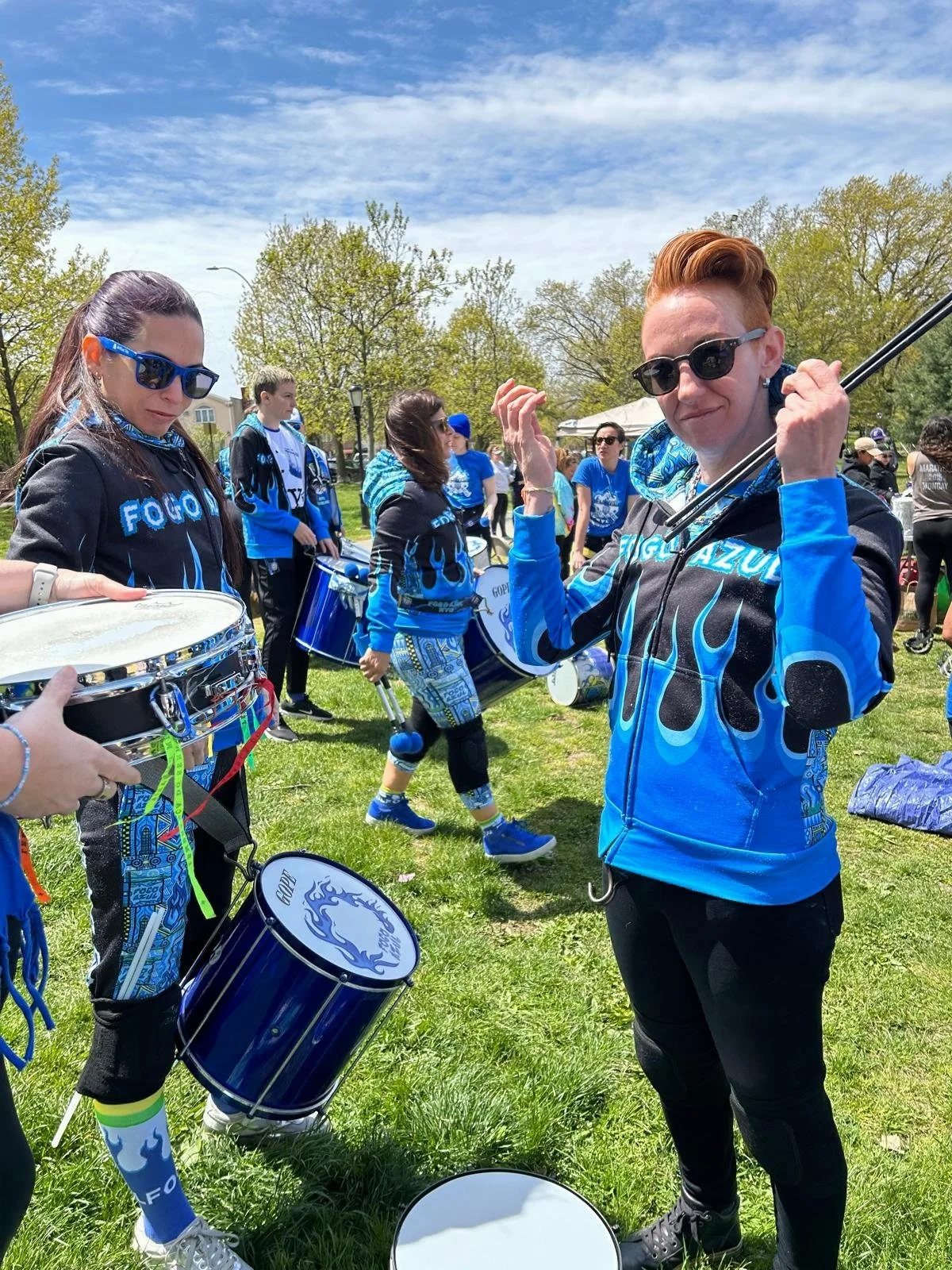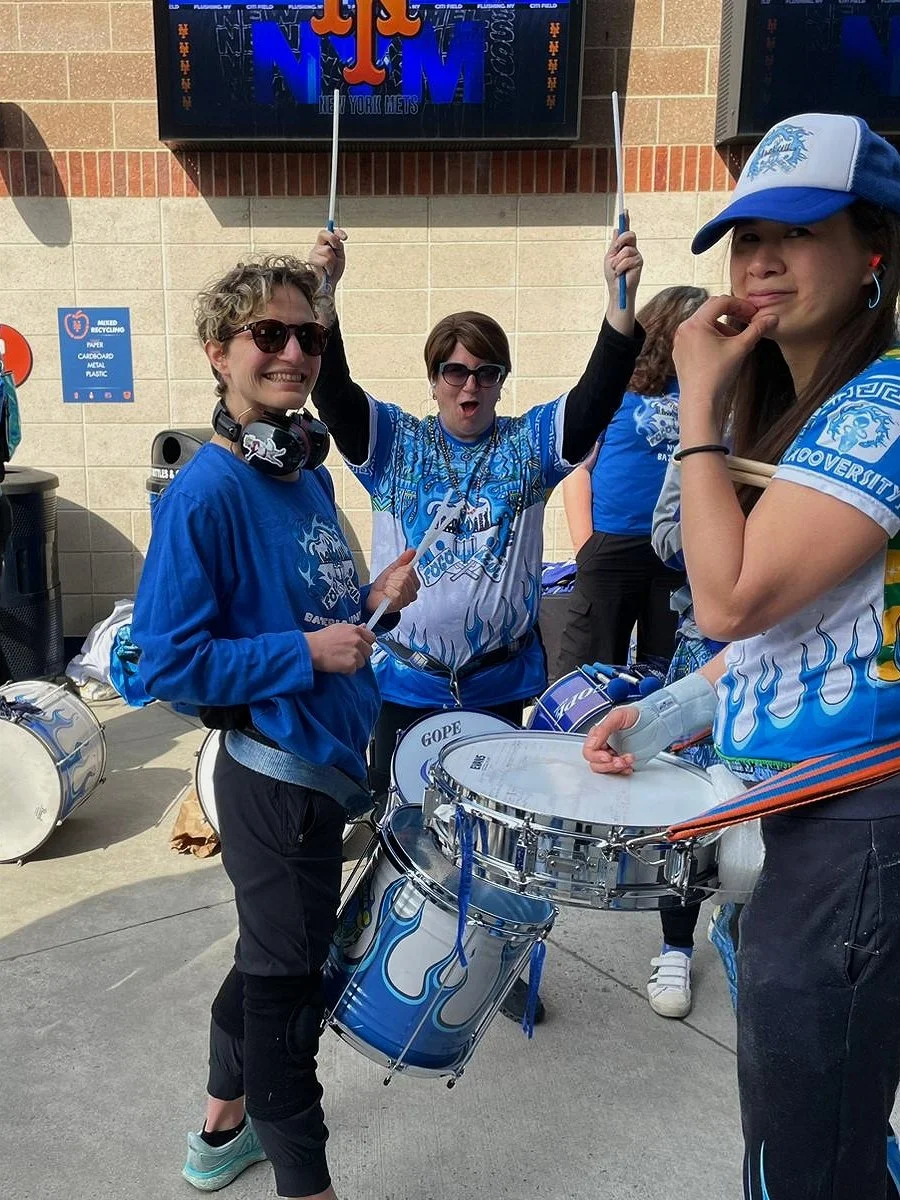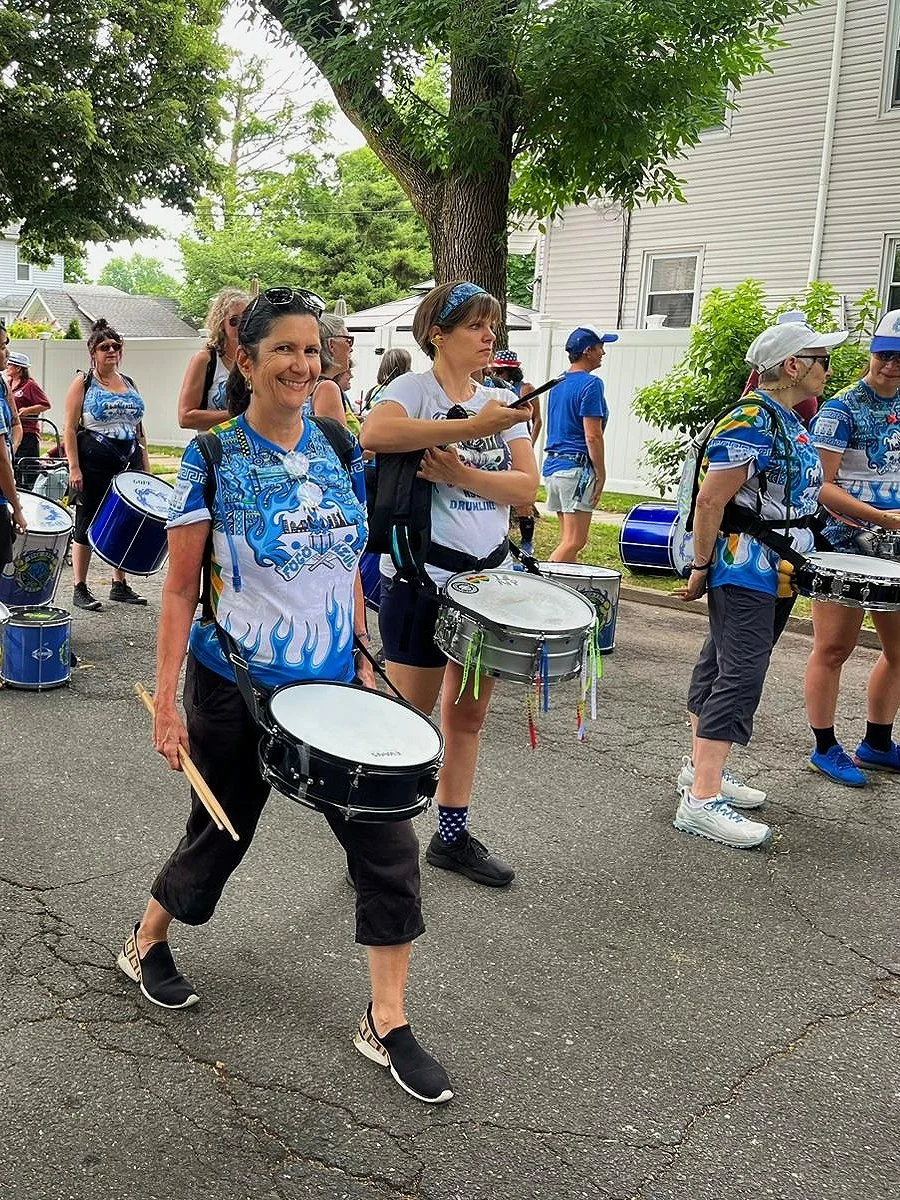What’s That Drum? Snare and Repique with Fogo Azul
The Snare Drum (or, Caixa)
If you listen with a sharp ear, tuning in beyond the deep booms of Fogo Azul, you’ll notice a more subtle but clear “engine of sound” coming from the middle of the band. What you’re hearing is the snare drum section! The snare drum is called the Caixa in Portuguese, which translates to “box”. It originates from “War Box” when drums were used in battle to signal the commands from the Generals.
In contrast to the other drums in the band that play varying rhythmic patterns with rests (or spaces) in between notes, the snares play a steady stream of hits. The playing gets interesting in the accent patterns embedded into that engine of sound. This means that the snares will sometimes strike the drum harder and louder on certain hits, whereas most of their notes are the quieter steady hits. From this mixture of sounds a rhythmic pattern emerges, setting a groove that accompanies the other drum parts.
I caught up with band member Theresa—who has been drumming in Fogo for 6 years!—to learn more about performing in the snare section. “I think the snare intimidates some people,” Theresa said, “but it’s worth trying out because playing snare gives you a better understanding of how to break down rhythms ... Once you have the basic 5-6 patterns down, you can play almost all of our repertoire.”
For the brave folks of Fogo who jump in to try snare, one of the most challenging things to do is to build up the stamina needed to maintain the ongoing stream of sound. Practice for this drum looks like concentrating on fundamentals: maintaining a relaxed grip on the drumsticks, building up speed while staying in time, and aiming to play as tightly and accurately as possible within the band. When asked about her favorite thing to play on snare, Theresa said “definitely the funk pattern, which we play at the end of Oxum … Who doesn’t love a section solo?!”
The Repique (or, Repinique)
Parade-goers who hear Fogo Azul might first feel the big rumble of the band from far away. But up close, a new sound cuts through the air with attention-grabbing energy. If you’ve heard this high, sharp, and powerful noise snap through the band, you’ve heard the repique, which we also call the repi.
At about 12 inches tall, the repi is quite small compared to most of the Fogo drums. Despite its size, the repi packs a big punch and brings a distinct sound to the band because it is the only drum played with flexible nylon sticks. Musically, the repi section plays engaging rhythmic lines that one might describe as a “melody” within the band’s texture. This role within the band is fun and exciting, but it also poses distinct challenges for the band members who pick up the instrument.
Learning and remembering repi parts takes time both in rehearsal and outside of the group setting. In addition, the repique section is consistently honing in on technique—hitting the center of the drum head and the rim at the same time. This playing method, as well as the correct grip on the sticks and the proper drum tuning, all contribute to the section sounding the best it can.
When asked what attributes make a strong repi player, band member Theresa says “Confidence! Regular practice and a good ear. The repi parts are complex with intricate rhythms and nuanced techniques. Plus the drum is LOUD so earplugs are ALWAYS needed, and you have to play with no fear!”
Don’t miss our next
“What’s That Drum?”
feature, coming soon.
Thanks! - Hattie from the Dobra section












